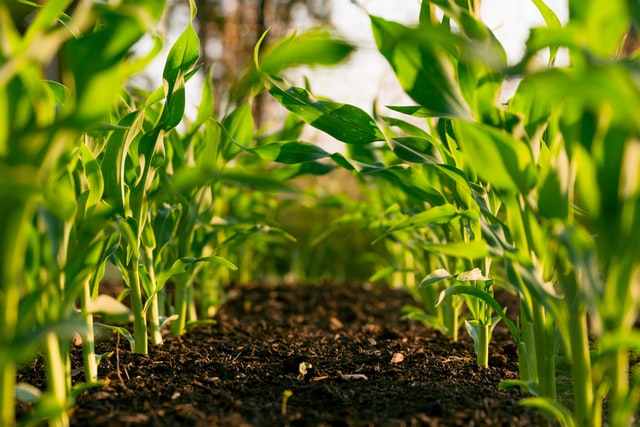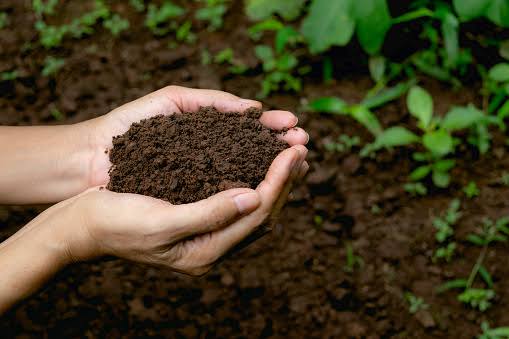The Need For Organic Fertilizers
The nucleus of the agricultural ecosystem is the soil. It is a precious resource that must be properly managed. It contributes significantly to total crop production. Biological creatures need it for survival and growth. There are several strategies to conserve soil to keep it productive, and one of the most effective is to add an organic fertilizer.
Organic matter promotes soil productivity by improving soil aeration, soil tilth (suitability for growing crops), increased beneficial microbial population, and effective soil moisture conservation, besides delivering nutrients that crops require for growth and development.
Organic fertilization and maintenance are necessary to reap these benefits from organic materials. The effective manufacturing and use of organic fertilizer is the key to successful organic crop production. Organic fertilizers revitalize and enhance soil qualities, resulting in higher agricultural yields. They include beneficial bacteria and humus, which improve the physical, chemical, and biological qualities of the soil when applied.
Producing organic fertilizers on the farm ensures that humus is added to the soil, allowing for more effective crop production. As a result, farmers must know the correct manufacture of organic fertilizers.
Get Your Agric Products Safely, Quickly And Cheaply
Click the button below and tell us which product you need. We will be glad to help you export them based on agreed terms.
Agric Market Articles & Insights
- Raw African Gold: Complete Guide on How To Trade & Buy From Africa
- 10 Amazing Health Benefits of Kola Nut (Cola Nitida & Cola Acuminata) You Probably Didn’t Know
- Top 30 Global Suppliers and Exporters of Kola Nut (Cola Nitida & Cola Acuminata)
- Dried Split Ginger: Complete Guide on Import/Export From Nigeria & Africa
- Kola Nut Powder: Complete Guide on Import/Export From Nigeria & Africa
- Dried Kola Nut: Complete Guide on Import/Export From Nigeria & Africa
- Kolanut: Uses, Health Benefits, Side Effects and Purchase
- Shea Nut: Uses, Health Benefits, Side Effects and Purchase
- 5 Highly Profitable Categories of Agric Produce in Africa
- Moringa: Uses, Health Benefits & All You Need To Know
- Organic Fertilizer: All You Need To Know About The Benefits, Procedures & Best Practices
- Top 7 Traditional Uses Of Kolanut
- Chili Pepper: Complete Guide on Import/Export From Nigeria & Africa
- Chili Pepper Medicinal Application and Health Advantages
- 10 Amazing Uses and Health Benefits of Bitter (Garcinia) Kola You Probably Don’t Know
- The Health Benefits & Uses of Sorghum You Should Know
- Cashew Nut Kernels: Complete Guide on Import/Export From Nigeria & Africa
- Top 10 Most Profitable Agriculture Business Ideas 2024
- Shea Nut: Complete Guide on Import/Export From Nigeria & Africa
- Bitter (Garcinia) Kola: Complete Guide on Import/Export From Nigeria & Africa
What Makes Up An Organic Fertilizer?
Organic fertilizer is any solid or liquid product of plant (excluding petroleum industry leftovers) or animal origin that has undergone significant breakdown. With total nitrogen (N), phosphorous (P), and potassium (K) content of 5-7 percent, it can provide accessible nutrients to plants. According to the Philippine National Standards (PNS) for Organic Fertilizer, 2013, this may be enhanced with microbial inoculants and naturally occurring minerals, but no chemical or inorganic fertilizer material has been added to the completed product to affect the nutritional content.
Any solid or liquid product of plant (excluding wastes from petroleum industries) or animal origin that has undergone extensive decomposition and may deliver accessible nutrients to plants with a total N, P, and K of 2.5 percent to less than 5 percent is considered compost/soil conditioner.
Microbial inoculants and naturally occurring minerals may have been added to improve the nutrient content, but no chemical or inorganic fertilizer material has been added to the finished product to impact the nutritional content. In the PNS, the terms compost and soil conditioner are interchangeable.
Beneficial microbes and humus are found in bio-fertilizers, which are fertilizer materials. They improve the physical, chemical, and biological qualities of the soil, all of which are important for crop productivity. What exactly are the components of composting? In composting, microorganisms play a critical function. Rapid composting causes the creation of the greatest possible habitat for microbial activity.
What are The Advantages of Organic Fertilizers?

Organic fertilizer has several environmental advantages. For instance it:
- Improves soil tilth and structure
- Increases the soil’s ability to hold water and nutrients
- Supports the living soil organisms
- Aids in the dissolution of mineral forms of nutrients
- Buffers the soil from chemical imbalances
- Biologically controls certain soil pests
- Aids in the return of organic materials to the soil.
What Facilities And Equipment Are Needed To Make Organic Fertilizer?
The tools you need for making your fertilizer can be sourced locally. Some of the absolutely necessary tools are:
- Shredder
- Water storage barrels
- Shovels, both flat and pointed
- Hoe
- Wheelbarrow
- Sift
- Hose for water
What is The Best Site For A Facility That Produces Organic Fertilizers?
Construct the composting shed and install the composting pile in an area that is not flooded and far away from potable water sources.
This is to prevent leachate created during the breakdown of organic materials from contaminating the water supply.

What Procedures are Involved in Making Organic Fertilizer?
1. Gather Your Raw Supplies
- Chicken feces that have been dried. Fresh chicken manure includes pollutants and dangerous germs, and it has an unpleasant odor. It is favored as a component in organic fertilizer manufacturing over fresh chicken dung.
- Sawdust, either regular or coco sawdust. This is a waste product of the lumbering business. However, only sawdust from non-chemically treated lumber should be used. Sawdust is a cheap and easy-to-find source of recalcitrant carbon in organic fertilizer. Recalcitrant carbon has been discovered to be stable in soil, assisting in the preservation of healthy soil structure.
- Sunflower in the wild. There is a high nitrogen content in it. Adding nitrogen to the pile raises the nitrogen content of organic fertilization. It can be found virtually all year and is available almost everywhere in the area. It’s beneficial since it boosts the organic fertilizer’s organic matter content.
- Get Trichoderma. This fungus has been a good decomposer since it speeds up the composting process. It’s separated from soil, rotting organic wood, and other plants organic matter.
2. Get Rid of The Unprocessed Stuff
Shredding is used to physically reduce the size of raw materials in order to speed up the breakdown process. Shredding materials to 1-inch diameters or smaller will speed up the breakdown process, especially tough and fibrous plant tissues. To give a larger surface area for decomposition, wild sunflower stems can be shredded up to 2-3 cm. It’s also a lot easier to blend raw materials with uniform sizes. Pulverize chicken dung and sawdust, especially those that include lumps, to speed up decomposition.
3. Arrange The Shredded Raw Materials in a Pile
This should be done layer by layer. A maximum of six layers of materials should be prepared. Each layer is approximately one foot thick. 50 percent chicken dung, 25 percent sawdust or coco sawdust, and 25 percent wild sunflower are the basic ingredients.
4. Spray The Pile With Water
After stacking, water each layer of raw materials. After that, water the pile regularly, at least twice a week. Moisture must be present in the materials. But don’t let it get moist or compacted. It’s preferable if the moisture level is between 40% and 60%. To avoid anaerobic decomposition, don’t add too much water to the pile. Anaerobic activity produces foul smells, which show a lack of oxygen. Enhance rotating frequency and/or add fibrous materials to the pile if the pile becomes too wet to reduce moisture content and increase oxygen.
5. Toss the Compost Pile Together
After two weeks of stacking, turn the compost pile from top to bottom. Repeat this process every week until the mound has completely decomposed. Mix the pile to aid in the effective breakdown of resistant and fibrous plant materials. Moisture and organisms that aid in the breakdown of raw materials are distributed uniformly throughout the composting materials because of this method. The pile will take 1-2 months to degrade if a fungal activator such as Trichoderma is used. Without the use of a fungal activator, the degradation process might take up to two months.
6. Wrap The Container in Polyethylene Plastic
To manage the temperature and maintain the proper heat, cover the pile with black polyethylene plastic sheets.
7. Add The Rice Hulls That Have Been Carbonized
To prevent the appearance and development of dangerous fungus in organic fertilizer, add roughly 2 kilograms of carbonized rice husk to 48 kg of organic fertilizer.
8. Allow The Organic Fertilizer To Air Dry
Organic fertilizer has a typical moisture content of 30% on the market. As a result, air-drying is required to achieve the proper moisture level.
9. Fine-Tune The Organic Fertilizer By Sieving It
Pulverize lumps that have developed during composting using the same shredder that was used to chop raw materials. To make consistently sized and finer organic fertilizer, use a 2-millimeter (mm) mesh sieve.
10. Place the Organic Fertilizer In a Bag
Pack 1 kg, 35 kg, and 50 kg plastic bags or sacks with sieved/refined organic fertilizer.
Get Your Agric Products Safely, Quickly And Cheaply
Click the button below and tell us which product you need. We will be glad to help you export them based on agreed terms.
Agric Market Articles & Insights
- Raw African Gold: Complete Guide on How To Trade & Buy From Africa
- 10 Amazing Health Benefits of Kola Nut (Cola Nitida & Cola Acuminata) You Probably Didn’t Know
- Top 30 Global Suppliers and Exporters of Kola Nut (Cola Nitida & Cola Acuminata)
- Dried Split Ginger: Complete Guide on Import/Export From Nigeria & Africa
- Kola Nut Powder: Complete Guide on Import/Export From Nigeria & Africa
- Dried Kola Nut: Complete Guide on Import/Export From Nigeria & Africa
- Kolanut: Uses, Health Benefits, Side Effects and Purchase
- Shea Nut: Uses, Health Benefits, Side Effects and Purchase
- 5 Highly Profitable Categories of Agric Produce in Africa
- Moringa: Uses, Health Benefits & All You Need To Know
- Organic Fertilizer: All You Need To Know About The Benefits, Procedures & Best Practices
- Top 7 Traditional Uses Of Kolanut
- Chili Pepper: Complete Guide on Import/Export From Nigeria & Africa
- Chili Pepper Medicinal Application and Health Advantages
- 10 Amazing Uses and Health Benefits of Bitter (Garcinia) Kola You Probably Don’t Know
- The Health Benefits & Uses of Sorghum You Should Know
- Cashew Nut Kernels: Complete Guide on Import/Export From Nigeria & Africa
- Top 10 Most Profitable Agriculture Business Ideas 2024
- Shea Nut: Complete Guide on Import/Export From Nigeria & Africa
- Bitter (Garcinia) Kola: Complete Guide on Import/Export From Nigeria & Africa
Important Considerations for Quick and Efficient Composting
1. Moisture
Microorganisms need a certain amount of moisture to flourish. For microorganisms, moisture content of 40 to 60 percent is optimum. Compost materials feel damp at this moisture level, but no water can be squeezed out. Maintain a wet but not soggy compost pile. The pile gets dense and ventilation through the pile is impeded if the raw materials are excessively damp. Wet raw materials render the pile anaerobic, slowing the decomposition process and causing an awful stench. Turn the pile over regularly to dry it if there has been too much water added. Sawdust or other fibrous materials can also be added.
2. Aeration
To break down organic materials more efficiently, microorganisms require oxygen throughout the breakdown process. As a result, optimum aeration of the compost pile is critical. The right stacking of materials promotes the flow of oxygen in the pile by alternating animal dung with a layer of plant materials. Aeration is also improved by turning the pile regularly since oxygen is immediately integrated into the pile.
3. Temperature
The pile’s temperature should be kept between 40 and 60 degrees Celsius for three weeks. Microorganisms consuming the materials during the breakdown process produce heat in the pile. Adjust the carbon/nitrogen (C: N) ratio, moisture, and oxygen levels until the bacteria can sustain the required heat. When the temperature rises beyond 60°C, flip the pile over to remove the excess heat and ensure that beneficial bacteria do not perish.
4. Compost material particle size
To speed up the decomposition process, reduce the size of raw materials to 1-2 inches. As a result, there is more surface area accessible for microbial activity.

The Importance of the Carbon-To-Nitrogen (C:N) Ratio In Organic Fertilizer Production?
When choosing raw materials for composting, you need to keep the following in mind, especially as it relates to the C:N ratio:
1. “Greens” as Nitrogen Sources
These are good nitrogen sources with a low Carbon to Nitrogen (C:N) Ratio, high moisture content, and fast decomposition. A C:N ratio of less than 30:1 is regarded as poor. Green leaves and fresh plant remnants are examples of greens.
2. “Browns” as Carbon Sources
These are materials that have a high carbon-to-nitrogen ratio, are dry and brownish, and disintegrate slowly. A C:N ratio of more than 30:1 is excessive. Rice straw, chopped branches, dung, and sawdust are examples of browns.
The Ideal C:N Ratio for Organic Fertilizers
When it comes to composting, a C:N ratio of 20:1 to 30:1 is optimum. The nitrogen concentration of green materials is higher than that of dry materials. The C:N ratio in fresh grasses is 19:1. Leaves have a C:N ratio of 35:1 to 85:1; peat moss has a 58:1 ratio; corn stalks have a 6:1 ratio; straw has an 80:1 ratio; agricultural manure has a 90:1 ratio, and sawdust has a 130:1 to 490:1 ratio.
Experiment with materials that are readily available in the area, making modifications as needed to achieve perfect decomposition conditions and a high proportion of plant nutrients. If the temperature of the compost pile is below the ideal range of 40 to 60 degrees Celsius and the mix is loose and friable (easy to crumble), add high-nitrogen plant materials and water to the pile to raise the temperature. Mixtures that are too dry or too moist are both unsuitable.
The following are the raw materials that have been used by some people to make organic fertilizer: 1. dried chicken dung, 2. sawdust or coco sawdust, 3. wild sunflower, and 4. Trichoderma.
You can also check out this good article by Echo Community on the preparation of organic liquid fertilizer.
What is The Best Way To Apply Organic Fertilizer To Vegetable Crops?
Organic fertilizer can be administered to each crop in the following manner:
- 2.5 tons per hectare (t/ha) organic fertilizer • 20 ml fermented liquid organic fertilizer/liter of water • First application: before planting
- 2.5 t/ha organic fertilizer • 20-60 ml fermented liquid organic fertilizer/liter of water • 10 days after planting
- 2.5-5 t/ha organic fertilizer • 20-60 ml fermented liquid organic fertilizer/liter of water • 30 days after planting
Before planting, apply a uniform amount of organic fertilizer either in furrows or on hills. Mix the fertilizer thoroughly with the soil. Apply another dose of organic fertilizer per furrow/hill close to or around the base of the crop after 10 days, then cover with dirt. Because organic fertilizer is a slow-release fertilizer, a second application is required to ensure that the crop receives the vital nutrients it requires. Apply organic fertilizer during tilling up thirty days after planting. Apply the remaining organic fertilizer requirements in equal amounts around or around the plants, then cover with dirt.
What Nutrients Can An Organic Fertilizer Supply to Plants?
Organic fertilizer gives plants all of the nutrients they need.
- It provides all of the macro-and micronutrients required for plant development and growth.
- It also includes a lot of organic matter, which is good for enhancing soil structure and giving soil bacteria carbon.
How Much Time Does it Take to Produce Organic Fertilizer?
It takes 30-45 days to produce one cycle of organic fertilizer. Eight production cycles can be completed in a year. A net income of P37,600–P57,600 can be obtained at the end of the eighth cycle. Organic fertilizer of excellent quality may be purchased for P300 to P400 per bag in other places.
Neogric is a trusted global order fulfillment and sourcing solution company with deep expertise in the Agric industry. Our end-to-end supply chain solution makes the export of quality agric products easy, quick, and safe. Whichever region of the world you are in, be it Europe, Asia, USA, Canada, Other North/Central American countries, Africa, South America, or Oceania, you can reliably order your agric products and we will ensure it is successfully delivered to you.
Get Your Agric Products Safely, Quickly And Cheaply
Click the button below and tell us which product you need. We will be glad to help you export them based on agreed terms.
Agric Market Articles & Insights
- Raw African Gold: Complete Guide on How To Trade & Buy From Africa
- 10 Amazing Health Benefits of Kola Nut (Cola Nitida & Cola Acuminata) You Probably Didn’t Know
- Top 30 Global Suppliers and Exporters of Kola Nut (Cola Nitida & Cola Acuminata)
- Dried Split Ginger: Complete Guide on Import/Export From Nigeria & Africa
- Kola Nut Powder: Complete Guide on Import/Export From Nigeria & Africa
- Dried Kola Nut: Complete Guide on Import/Export From Nigeria & Africa
- Kolanut: Uses, Health Benefits, Side Effects and Purchase
- Shea Nut: Uses, Health Benefits, Side Effects and Purchase
- 5 Highly Profitable Categories of Agric Produce in Africa
- Moringa: Uses, Health Benefits & All You Need To Know
- Organic Fertilizer: All You Need To Know About The Benefits, Procedures & Best Practices
- Top 7 Traditional Uses Of Kolanut
- Chili Pepper: Complete Guide on Import/Export From Nigeria & Africa
- Chili Pepper Medicinal Application and Health Advantages
- 10 Amazing Uses and Health Benefits of Bitter (Garcinia) Kola You Probably Don’t Know
- The Health Benefits & Uses of Sorghum You Should Know
- Cashew Nut Kernels: Complete Guide on Import/Export From Nigeria & Africa
- Top 10 Most Profitable Agriculture Business Ideas 2024
- Shea Nut: Complete Guide on Import/Export From Nigeria & Africa
- Bitter (Garcinia) Kola: Complete Guide on Import/Export From Nigeria & Africa
Agric Market Articles & Insights
- Raw African Gold: Complete Guide on How To Trade & Buy From Africa
- 10 Amazing Health Benefits of Kola Nut (Cola Nitida & Cola Acuminata) You Probably Didn’t Know
- Top 30 Global Suppliers and Exporters of Kola Nut (Cola Nitida & Cola Acuminata)
- Dried Split Ginger: Complete Guide on Import/Export From Nigeria & Africa
- Kola Nut Powder: Complete Guide on Import/Export From Nigeria & Africa
- Dried Kola Nut: Complete Guide on Import/Export From Nigeria & Africa
- Kolanut: Uses, Health Benefits, Side Effects and Purchase
- Shea Nut: Uses, Health Benefits, Side Effects and Purchase
- 5 Highly Profitable Categories of Agric Produce in Africa
- Moringa: Uses, Health Benefits & All You Need To Know
- Organic Fertilizer: All You Need To Know About The Benefits, Procedures & Best Practices
- Top 7 Traditional Uses Of Kolanut
- Chili Pepper: Complete Guide on Import/Export From Nigeria & Africa
- Chili Pepper Medicinal Application and Health Advantages
- 10 Amazing Uses and Health Benefits of Bitter (Garcinia) Kola You Probably Don’t Know
- The Health Benefits & Uses of Sorghum You Should Know
- Cashew Nut Kernels: Complete Guide on Import/Export From Nigeria & Africa
- Top 10 Most Profitable Agriculture Business Ideas 2024
- Shea Nut: Complete Guide on Import/Export From Nigeria & Africa
- Bitter (Garcinia) Kola: Complete Guide on Import/Export From Nigeria & Africa


